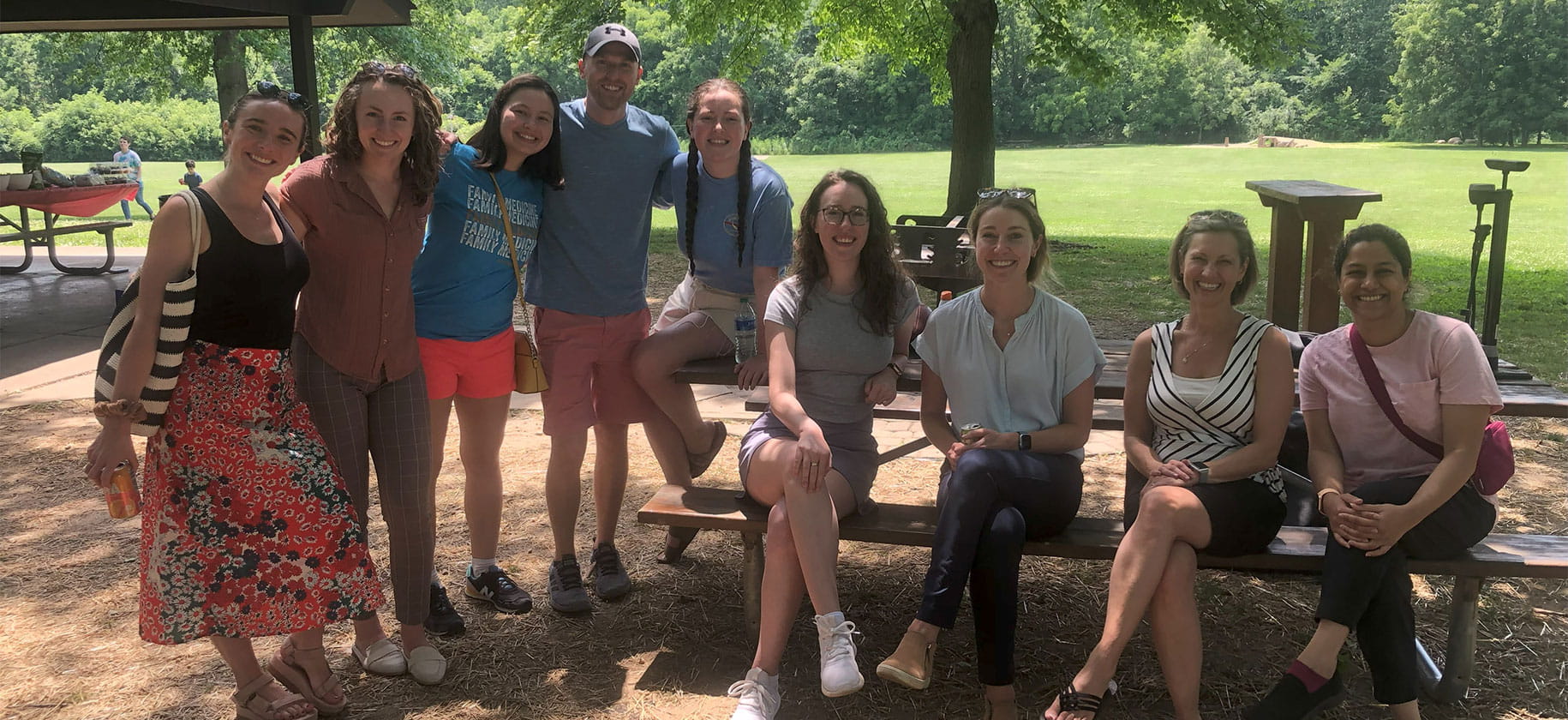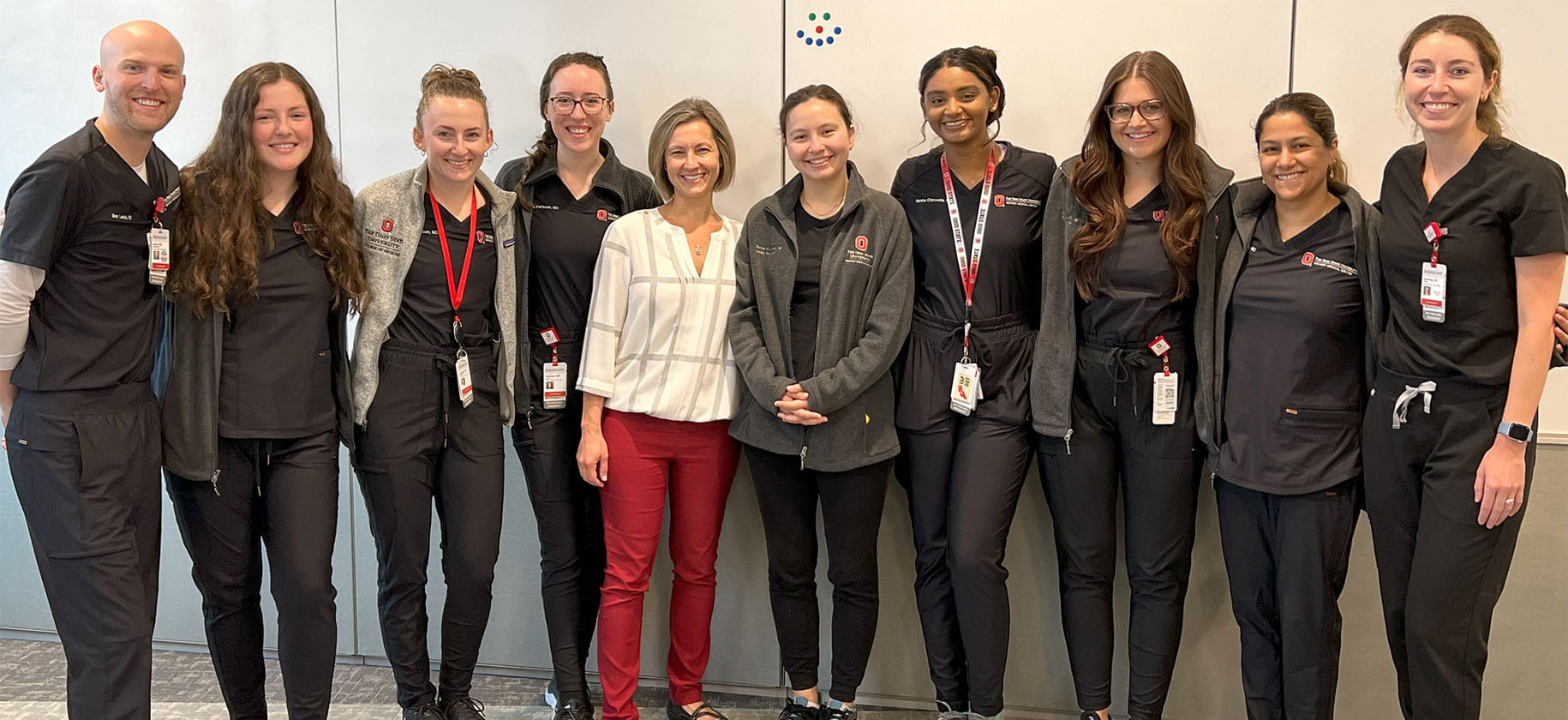Training today's family physicians for tomorrow
Welcome to The Ohio State University Wexner Medical Center Family Medicine Residency. Through our program, you will be exposed to innovative technology and specialty rotations at our large academic medical center, while concurrently receiving community-based training at The Ohio State University Wexner Medical Center East Hospital, which is our community-based hospital.. Pediatric training happens through our partnership with Nationwide Children's Hospital, a nationally renowned pediatric health system. Our program ensures you have the training and support to be well-prepared for any type of practice.Program overview
Mission
To prepare exemplary physicians to comprehensively care for the whole family, serve their community and improve people’s lives through innovation and excellence in scholarship, education and patient care.Values
C.A.R.E.S.
- Compassion – We are sensitive to and seek to alleviate the difficulties of others.
- Advocacy – We seek to be change agents and will advocate for those who cannot help themselves.
- Respect – We respect all people and aim to create an inclusive, welcoming environment.
- Equity – We want to lift up those who are under-resourced and create equity in our care of our patients and each other.
- Service – As a member of our community, we have an obligation to serve those around us.
Aims
- Train excellent family medicine residents who, upon graduation, are fully competent and board certified in family medicine capable of providing full spectrum, high quality, patient-centered care.
- Foster and teach a culture of wellness, resiliency and professionalism that promotes a well-rounded and balanced career and life.
- Ensure each resident is aware of and sensitive to the barriers that individual patients may experience. By incorporating health equity education and training we aim to prepare residents to globally improve the health of individuals and populations that they serve.
- Cultivate an atmosphere of inquiry and scholarship to encourage lifelong learning. Support and prepare those residents who wish for careers in academic family medicine to further their training in fellowships or in obtaining other advanced degrees
- Develop skills to lead organizations and teams in transforming the delivery of health care in their communities, regions and in the nation.
There are two outpatient centers where our residents see family medicine patients. Primary Care Northwood-High is located next to the Ohio State campus and provides a mixture of underserved care along with serving university staff and students. Our other outpatient office is Outpatient Care East, which is located just outside of Downtown Columbus and has an urban setting, serving a larger proportion of the underserved population. First-year residents all have the same curriculum and rotations, while second- and third-year residents work out of their primary outpatient clinics. While more alike than different, differences between training locations can be found via the links to the left
Both locations offer an excellent training environment to learn full-spectrum, patient-centered primary care. All residents attend didactics weekly at our Family Medicine Thomas Rardin Clinic in the Northwood-High building. Residents in either track have the opportunity to pursue their MBA or MPH at Ohio State during their residency training in the academic focus. The program is in complete compliance with the ACGME duty hours rules.
- What is the Call Schedule like?
We have limited call time during your residency. On our inpatient service we have a night float system where there is a day team and a night team. There is no call. Second and third year residents complete two or three 24 hour cross covers per year on the inpatient service. Second year residents are on OB continuity call for ~6 weeks during the year. During this time residents take home call and triage continuity patients that present to L&D. OB call is taken one week at a time. No other call is taken during residency. - What is the Moonlighting policy?
Moonlighting is permitted for second and third year residents who hold a valid permanent Ohio medical license, as long as it does not interfere with the resident’s responsibilities to the program. Before being allowed to moonlight, the resident must fulfill all obligations of the residency program and be approved to do so by the residency director. - Is there an educational fund?
The program pays for the ABFM board exam, as well as Step 3 or Level 3 exam. Additionally, we have a $3,000 CME fund for each resident to use over the course of residency. The GME office now also provides an educational fund of $500 for each resident, which renews each academic year. Furthermore, we have scholarship opportunities available for residents who are presenting at conferences. - Is there an opportunity for a Global health rotation while in residency?
Yes, third year residents are permitted to complete a global health rotation of up to 28 days (4 weeks).
How to apply and requirements
The Ohio State University Family and Community Medicine Residency participates in the National Residency Matching Program (NRMP). We accept applications only through the Electronic Residency Application Service (ERAS).
We have 9 PGY-1 slots available each year.
Program name: Ohio State University Hospitals Program
NRMP code: 1566120C0
Application must include:
- Personal statement
- Curriculum vitae
- Dean’s Letter/MSPE Transcript
- Three letters of recommendation from faculty members familiar with your performance. Recommend at least one comes from a family physician.
- International graduates must have a valid ECFMG certificate
- USMLE Steps 1 and 2 and/or COMLEX Levels 1 and 2 passing scores
Submitting an application through ERAS does not guarantee an interview.
We understand that waiting to hear from a residency program to interview can be suspenseful. We are committed to reviewing our applications with a holistic approach, which takes time. Starting at the end of September we will begin the review process. Our first wave of interview offers will be extended the first week of October. Interview season will begin in mid to late October and last through January. Selected applicants will be contacted with details and instructions for setting up an interview.
Our interviews will occur virtually.
In lieu of in person tours of facilities, please consider viewing our online tour featuring a variety of our health care facilities.
If you have any questions, please contact our residency office:
Sarah Jovanelli, MEd
Family and Community Medicine Residency Program Manager
Department of Family and Community Medicine
614-293-2651
Sarah.Jovanelli@osumc.edu
Ideal candidates for our program have the following characteristics:
- A passion to become an excellent family physician poised for leadership in the future of health care
- A strong work ethic
- An ability to work well within teams
- A thirst for learning and self-motivation to be a life-long learner
Our program strives to create a learning environment that emphasizes excellence, evidence-based medicine, high quality patient care, teamwork, scholarship and leadership.
- Must have a minimum of one-year clinical training in the United States. Observerships and research positions do not satisfy this requirement
- Must have a valid ECFMG certificate before start of residency (if applicable)
- Must be eligible for J-1 visa, if applicable. (Important note: The Ohio State University Wexner Medical Center accepts J-1 visas only)
PGY-1: $68,764
PGY-2: $70,835
PGY-3: $73,100









